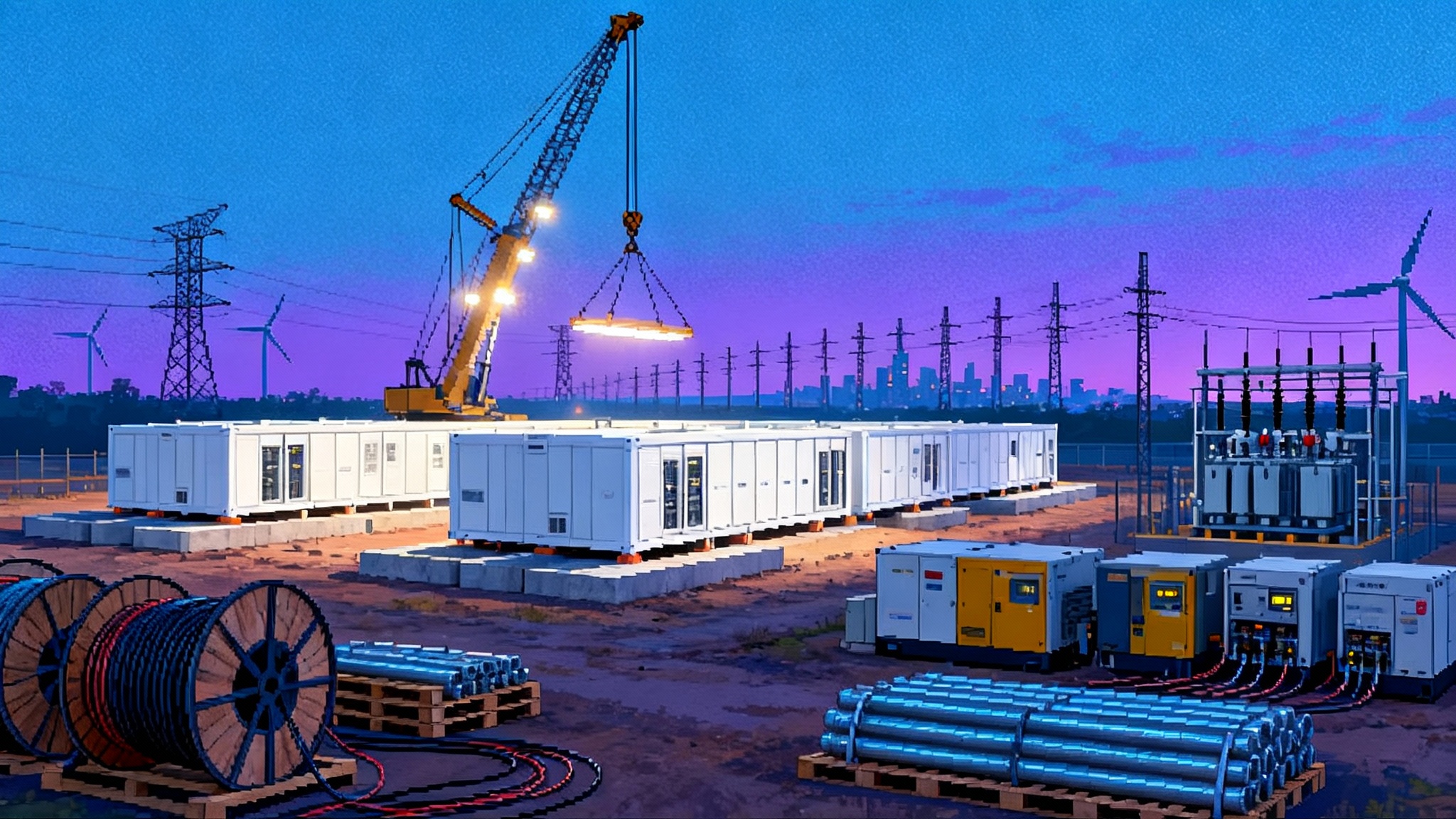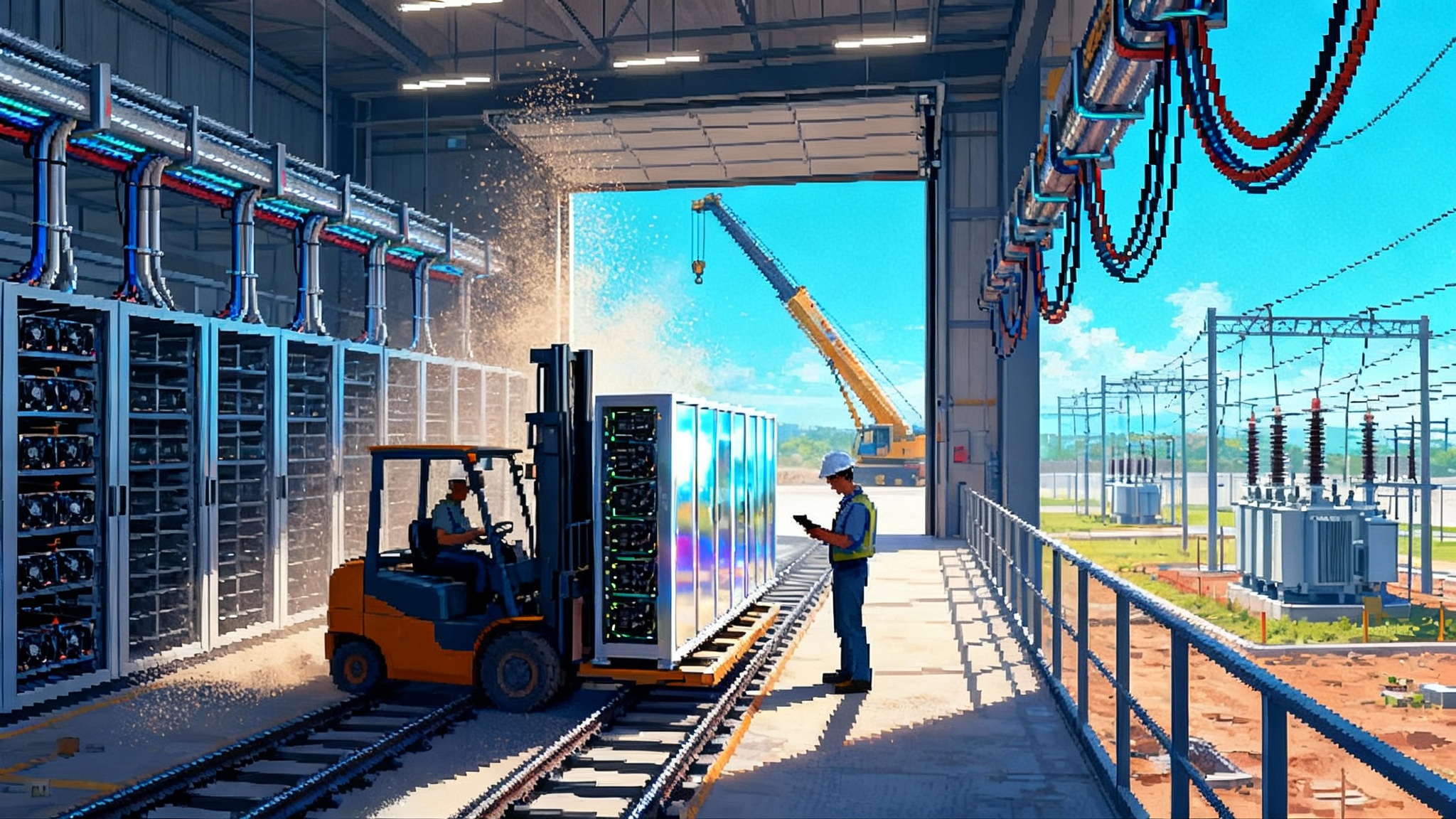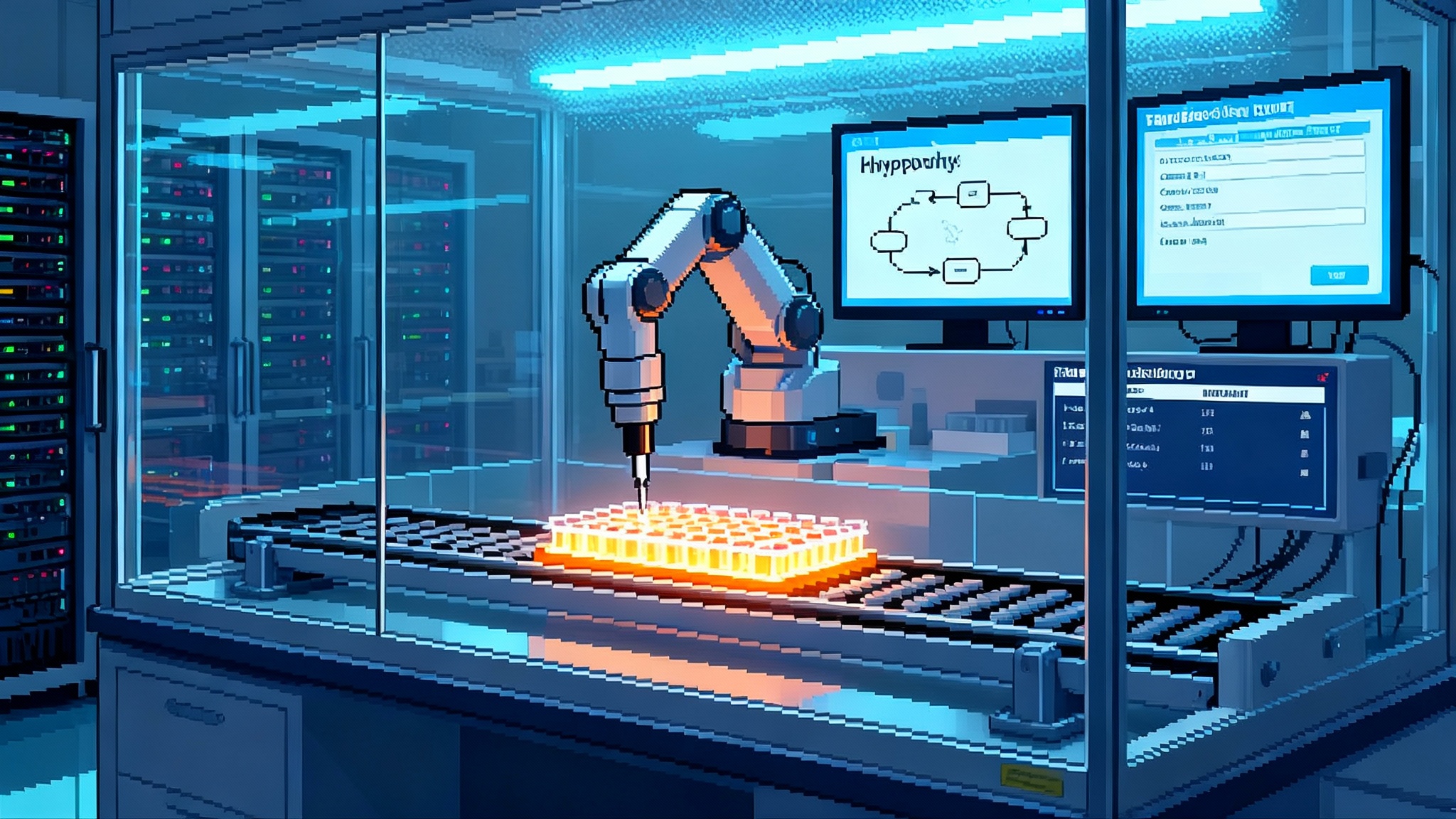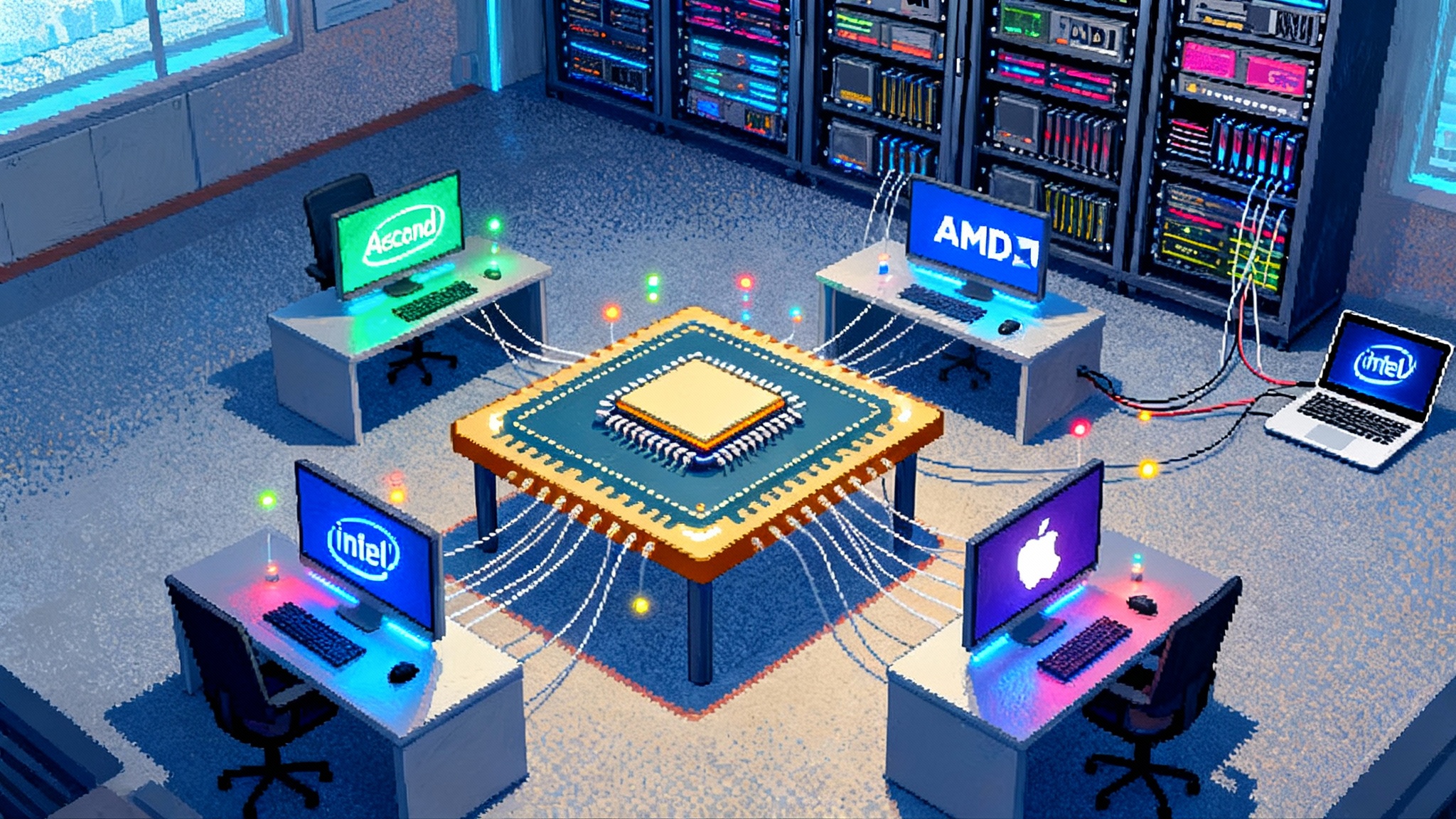The AI Interest Rate: How Compute Pushes Up Neutral r*
AI is no longer just software. The buildout of chips, data centers, and power is lifting desired investment and nudging the neutral rate higher. See how compute behaves like capital and how to plan for it.

The new macro variable in the room
In the span of a single year, two debates merged into one story. Central bankers reignited a public conversation about the neutral interest rate, the real rate consistent with stable inflation and full employment. At the same time, the largest companies on earth signaled breathtaking spending on data centers to feed artificial intelligence. Those are not parallel lines. They intersect in the economy, where intelligence embodied in chips, energy, and buildings becomes a force that can shift the neutral rate.
New York Fed President John Williams recently revisited the elusive r-star, stressing that policymakers infer it from the economy’s behavior rather than observe it directly. He framed r-star as global in nature, shaped by savings and investment that flow across borders, and showed model estimates across major economies through 2025. That view matters because the investment side is undergoing a historic shock driven by AI infrastructure with real costs in steel, land, and electricity, not just code in the cloud. For a policy backdrop, see Williams’s speech All the Stars We Cannot See.
Compute behaves like capital
A decade ago, the phrase software is capital was mostly metaphor. Now the metaphor has a physical footprint. Training and serving modern models requires substations, high voltage lines, gas turbines and wind farms, hyperscale buildings, liquid cooling, and chips that arrive by the pallet. Firms are racing to secure this capacity, and the economy feels it.
A simple stack explains why:
- Training is the episodic mega project. It demands thousands of accelerators, months of reserved megawatts, and long planning cycles. These look and finance like classic capital projects.
- Inference is the metronome that never stops. Every prompt, every background summarizer, every tiny decision inside software is a small unit of compute. At scale, it becomes a recurring service flow, like a factory running three shifts.
- Memory and data serve as inventory and logistics. Proximity to compute, bandwidth, and privacy drive costs and margins.
Add them together and you get an economy inside the economy, with its own capital intensity, lead times, and bottlenecks. Chip supply is cyclical yet tight. Power is abundant in some regions and scarce in others. Permitting can take years. These frictions lengthen the duration of cash tied up in projects and raise hurdle rates for investors who must be paid to tolerate risk and illiquidity.
The strategic implication is straightforward: compute now behaves like a financed asset, not a utility bill. A startup that once scaled by hiring engineers and renting generic cloud now faces decisions that look like plant expansion and energy procurement. A megacap that previously favored buybacks is allocating into grid interconnects and custom silicon. For a broader framing of this shift, see our take on the AI becomes capital thesis.
The capex fuse is lit
We are not dealing with hypotheticals. Big Tech has moved from slides to shovels. Amazon guided investors to one of the largest corporate capital programs on record, roughly 100 billion dollars of capital expenditures in 2025, driven largely by AI data centers and the services layered on top. See the Amazon 2025 capex plan for management’s framing and numbers.
Amazon is not alone. Other hyperscalers have signaled elevated spending paths tied to accelerators, networking, memory, and facilities. Telecom carriers and content delivery networks are redesigning routes for low latency inference. Chipmakers are booking out advanced packaging. Utilities are fielding multi-gigawatt requests from campuses that did not exist on the map three years ago. Even without exact figures for each actor, the direction is obvious. The economy is being asked to produce and finance a larger stock of compute, power, and buildings, sooner.
How higher investment lifts r-star
The neutral rate is the real policy rate consistent with the economy running at potential and inflation at target. In plain terms, it is the rate at which the economy neither runs hot nor cold. Several channels link AI’s buildout to a higher r-star:
- Desired investment rises relative to desired saving. When firms want to borrow to build data centers faster than savers want to defer consumption, real rates adjust upward until plans reconcile.
- Trend growth expectations improve. If businesses expect AI to lift productivity, they can profitably borrow at higher real rates today, nudging equilibrium higher.
- Risk and term premia widen. Grid upgrades that take longer than planned, or chip supply that remains tight, add uncertainty. Investors demand more compensation for long duration cash flows, lifting longer rates even if the short-run r-star moves less.
History rhymes. Railroads, telecom backbones, and broadband produced similar patterns, though AI touches more sectors simultaneously and is more energy intensive. That energy intensity binds monetary policy to physical constraints more tightly than the smartphone decade ever did. For a deeper dive into the power side of this equation, see why the grid becomes AI's bottleneck.
Machine time preference enters finance
AI introduces a new agent into the economy with its own time profile. Models consume compute and energy per token of output, and the cost per token declines with scale, optimization, and silicon cycles. The cheaper it is to answer or anticipate a user’s need, the more applications will run, and the more demand shifts to inference.
Call this machine time preference. A model that can answer a support ticket in 120 milliseconds generates revenue today rather than after a human shift tomorrow. A model that can scan a codebase continuously reduces downtime in minutes rather than hours. The financial system prices these differences. Lower latency and higher availability pull cash forward. They justify investments in redundancy, edge deployments, and alternative power. They also raise the cost of waiting, which is another way of saying they increase the willingness to pay for capital that removes delay.
Here is a concrete example. Suppose a commerce platform loses 50 basis points of conversion for every 100 milliseconds of latency during checkout. A model based fraud filter running in a faraway region adds 250 milliseconds on average. Moving inference to an edge data center cuts that to 70 milliseconds. If the platform processes 2 billion dollars of annual checkout volume with a 5 percent take rate, the latency change swings revenue by roughly 1.8 million dollars per year. If the edge deployment costs 6 million dollars all in and depreciates over three years, even at a 7 percent real hurdle rate the net present value is positive. The higher the hurdle rate, the more this calculation discriminates between true latency leverage and gold plating. That is how the new regime disciplines design.
A higher for longer baseline, not a panic
A higher neutral rate does not imply emergency policy forever. It suggests that when inflation is at target and the economy is at potential, the resting place for policy is higher than before. If r-star drifted down for decades due to demographics and safe asset shortages, it can drift up for several years due to investment supercycles and a modest rebound in productivity.
This shift rewrites playbooks. The center of gravity for discount rates moves up. Duration is still valuable, but it must be earned. Profitless growth narratives work only if they sit on top of very cheap compute or network effects that truly lower unit costs with scale.
Policymakers will have to navigate two pitfalls:
- Cutting too quickly. Looser policy can refuel speculative flows into capacity that is already booked, pushing asset prices without adding real supply.
- Holding too tight. If policy stays restrictive for too long, it can starve credible projects that raise future supply, especially grid buildouts that are the rate limiting step for data centers.
The dual mandate becomes a three body problem when electricity and silicon enter the orbit. Better forward indicators for data center interconnection, chip deliveries, and utility capital plans can help.
What founders should do in 2026 to 2028
The most practical implications show up in operating plans. Use this checklist to navigate a higher baseline rate world:
- Treat compute like a financed asset. Pre commit capacity only when you can prove a path to high utilization within your cash runway. Use thresholds such as 60 percent sustained utilization within six months, with a migration plan to lower cost regions if you miss.
- Rewrite unit economics with inference in the denominator. Gross margin should reflect real time token costs, bandwidth, and memory bandwidth, not a blended cloud average. Show margin per 1,000 tokens or per request in board decks. For data leverage strategy, revisit why memory is the new moat.
- Hedge energy as a first class input. If you plan to run inference at scale, pursue a power purchase structure that passes through price stability, or partner with a developer for behind the meter renewables if your workloads and permitting allow. Map latency needs to the power map rather than office locations.
- Prefer contracts that keep optionality. In a higher baseline rate world, flexibility is valuable. Avoid rigid prepayments for capacity beyond 12 to 18 months unless you also secure cancellable or transferable rights. Negotiate step downs as models get more efficient.
- Finance with a barbell. Use venture debt or revenue based financing for inference scale up where payback can be measured in months, and reserve equity for model training or product expansions with longer payback.
- Build software that is hardware aware. Cross compile for cheaper accelerators and apply sparsity or quantization where possible. Each step of model efficiency compounds into lower capital needs and more tolerance for higher discount rates.
How investors and CFOs should price risk
A world where r-star is 100 to 150 basis points above the pre pandemic trough implies new discount rates and a different view of moats.
- Value capacity rights as options. Contracts for preferred access to chips or interconnects are not vanity assets. Price them as real options with strike prices in token costs and expiries in months. Revalue them as the supply picture changes.
- Underwrite energy exposure explicitly. If a portfolio relies on one congested grid, load diversify. Favor companies that can shift inference across regions as locational marginal prices move. Ask for telemetry at the request level.
- Raise hurdle rates for pure model providers without distribution or unique data. If the cost of capital is higher, scale alone is not a moat unless it drives unit costs down. Reward businesses that show a declining cost curve per user action.
- Expect compression in terminal multiples. With a higher neutral rate, the long tail of cash flows is discounted more sharply. Focus diligence on the middle of the forecast where competitive dynamics and gross margin improvements do the heavy lifting.
National industrial policy in a compute cycle
Policymakers face a practical menu between 2026 and 2028. Rather than slogans, focus on the bottlenecks most likely to bind while respecting budgets.
- Treat data center power as critical infrastructure. Fast track interconnection for projects that commit to load shaping and onsite storage. Reward designs that can island during peak stress. Standardize contracts that exchange reliability services for faster permits.
- Align incentives with measured efficiency. Tie any tax credits for AI infrastructure to real gains in performance per watt. Publish open benchmarks for served tokens per joule to avoid paying for empty square footage.
- Backstop long dated transmission. Many regions will not finance multi decade lines at current term premia without support. Offer partial credit guarantees that sunset as congestion rents are realized.
- Expand workforce pipelines. The gating factor in many regions is not code, it is technicians who can install switchgear or operate cooling systems. Fund community college programs with guaranteed apprenticeships.
- Coordinate on data with central banks. If r-star is influenced by investment cycles, publish forward indicators of interconnection requests, chip import schedules, and utility capex so monetary policy sees the wave earlier.
A practical forecast
Put it together and a plausible base case emerges. The next three years feature elevated private investment in AI infrastructure, with inference demand rising faster than training. Power constraints become the leading bottleneck in several hubs, and a mix of new gas peakers and renewables with storage fills the gap. Central banks watch the data closely. They observe robust investment and productivity indicators that are noisy but trend upward. The neutral rate edges higher relative to pre pandemic estimates, which nudges policy into a higher resting place once inflation is back at target.
The direct path from AI to the policy rate is not simple or immediate. It runs through the tangible economy, through transmission lines, chips, and contracts. It shows up in the forward guidance of companies that are committing real money to build capacity. It shows up in electricity auctions and in the premiums paid for scarce interconnects. The lesson is not that money will be expensive forever. It is that the cost of time is being repriced because more agents in the economy can turn time into revenue.
The founder’s lens on r-star
You do not need a PhD or a macro model to use this lens. Treat the neutral rate as the economy’s baseline speed limit. If the limit rises, lane changes get riskier. You leave more distance between cars. You also upgrade the brakes. In practical terms, you insist on better margins, faster paybacks, and clearer rights to the inputs that matter. You prepare for a market that demands evidence that growth lowers unit costs rather than simply buys more users.
The companies that thrive will wire this into the operating system. They will route workloads to cheap power, pre buy capacity in measured steps, push model efficiency relentlessly, and treat their energy bill like a strategic document. They will talk to investors with metrics that make rate sensitivity obvious rather than hiding it in a blended cloud line. They will act as if their compute is a plant with shifts and maintenance windows, not an infinite pipe.
Conclusion: pricing the future when machines keep the clock
We have entered a period where the price of money and the price of machine time are tied more tightly than at any moment in the software era. The buildout of intelligence at scale lifts desired investment, and with it nudges the neutral rate. That shift will not be linear, and it will not be permanent, but it will be long enough to demand new habits. For central banks, the challenge is to let the supply side build while guarding credibility. For companies, the task is to run toward efficiency and to finance compute with the same discipline used for factories and fleets. For investors, it is to price optionality correctly and avoid paying growth multiples for models that do not move the unit cost curve.
In short, we are learning to do finance in a world where attention, energy, and silicon price the future together. The sooner we adopt that view, the better our chances of building systems that earn a higher cost of time.







